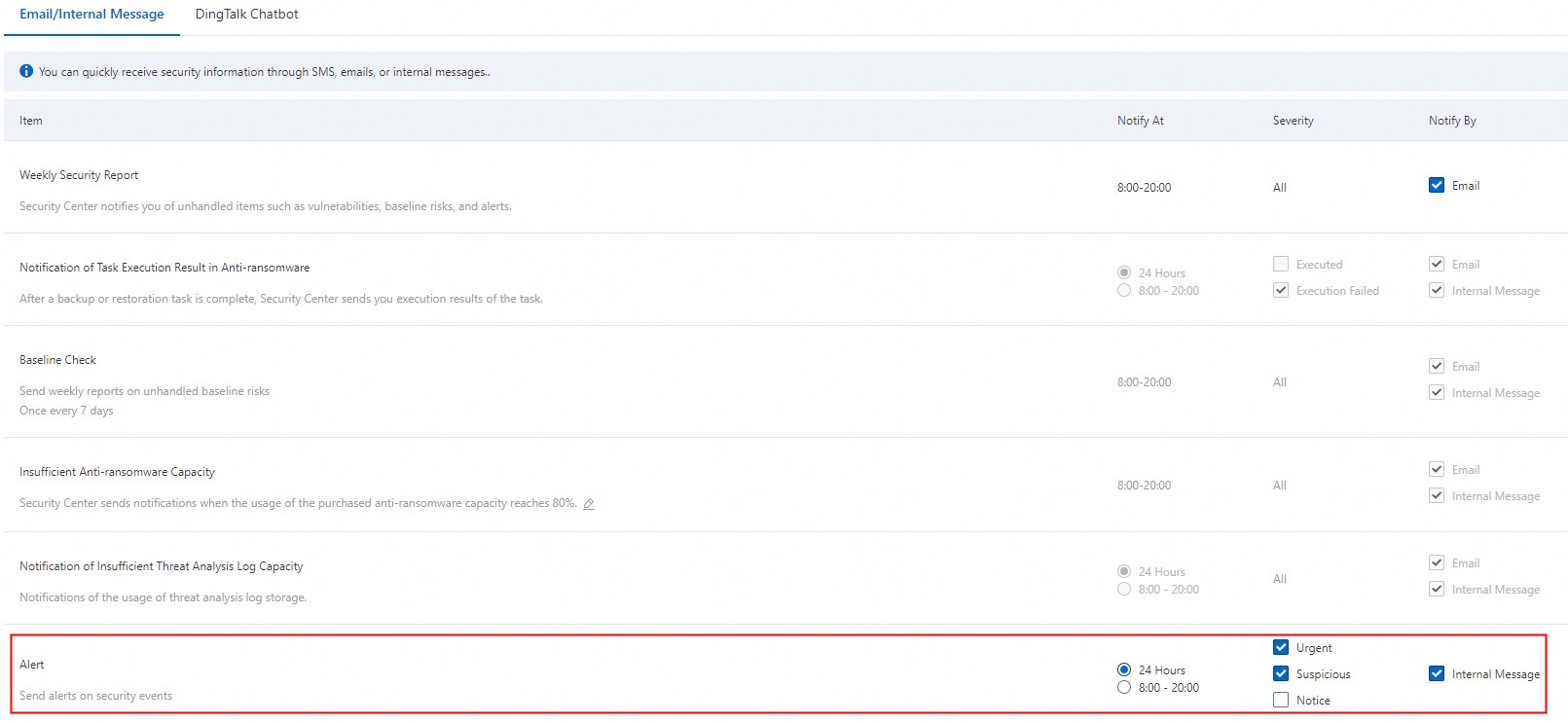Vulnerability severity | Description | Scenario | Solution | Handling method |
High Risk | The high-risk vulnerabilities directly threaten system security. The vulnerabilities include system vulnerabilities that are not fixed, SQL injection vulnerabilities, and weak passwords. We recommend that you take note of the vulnerabilities and fix the vulnerabilities at the earliest opportunity. | System vulnerabilities that are not fixed: High-risk Common Vulnerabilities and Exposures (CVE) in operating systems, such as Linux and Windows. Remote Code Execution (RCE) vulnerabilities that are not fixed at the earliest opportunity.
| Detect and install security patches for the operating system and software on a regular basis. Use the vulnerability scanning feature of Security Center to fix high-risk vulnerabilities at the earliest opportunity.
| In Linux, run the yum update or apt-get update command to install updates. In Windows, use Windows Update to install latest patches.
|
Web application vulnerabilities: SQL injection vulnerabilities that can directly obtain database access permissions. Remote command execution vulnerabilities, such as Struts2.
| | Fix security vulnerabilities in code, such as using parameterized queries to prevent SQL injection. Update web frameworks and components to the latest versions.
|
Service configuration vulnerabilities: Services, such as Redis and MySQL, do not have passwords configured or are exposed to the Internet. Unauthorized access to Docker.
| Do not expose high-risk services, such as Redis and MySQL, to the Internet. Configure strong passwords for the services and restrict IP addresses that can access the services.
| Modify configuration files to bind the services to internal IP addresses or configure whitelist settings. Enable identity authentication features, such as the requirepass setting for Redis.
|
Malware: | | |
Weak password risks: Services, such as SSH, Remote Desktop Protocol (RDP), and FTP, use weak passwords or the default password.
| Use a strong password policy that requires a password to contain lowercase letters, uppercase letters, digits, and special characters. Enable multi-factor authentication (MFA).
| |
Medium Risk | The medium-risk vulnerabilities may cause harms to the system, such as Cross-Site Scripting (XSS), file upload vulnerability, and unusual logons. We recommend that you fix the vulnerabilities at the earliest opportunity. | Software vulnerabilities that are not fixed: Medium-risk vulnerabilities in middleware, such as Apache, NGINX, and Tomcat. Privilege escalation vulnerabilities in databases, such as MySQL and PostgreSQL.
| | |
Web application vulnerabilities: | | Fix the XSS vulnerabilities in code, such as encoding outputs by using HTML. Add the types of files to be checked and scan for viruses.
|
Configuration risks: Web services that do not have HTTPS enabled. High-risk ports, such as ports 22 and 3389, that do not restrict IP access.
| | |
Unusual logons: | | Configure the Fail2Ban tool of SSH to prevent brute-force attacks. Modify security group rules to restrict the IP addresses that can access services, such as SSH and RDP.
|
Data leak risks: | | |
Low Risk | The low-risk vulnerabilities are less harmful to your assets than high-risk and medium-risk vulnerabilities, but long-term existence of low-risk vulnerabilities may increase risks, such as configuration risks and compliance risks. You can fix low-risk vulnerabilities at your convenience. | Low-risk vulnerabilities that are not fixed: | | |
Configuration risks: | | Configure a log audit tool, such as Logrotate. Update SSL certificates and enable auto-renewal for SSL certificates.
|
Compliance risks: | | |
Other risks: | | |
 Elastic Compute Service (ECS)
Elastic Compute Service (ECS)
 Container Compute Service (ACS)
Container Compute Service (ACS)







 icon in the Monitoring column to log on to the Security Center console and view security reports.
icon in the Monitoring column to log on to the Security Center console and view security reports. 






















